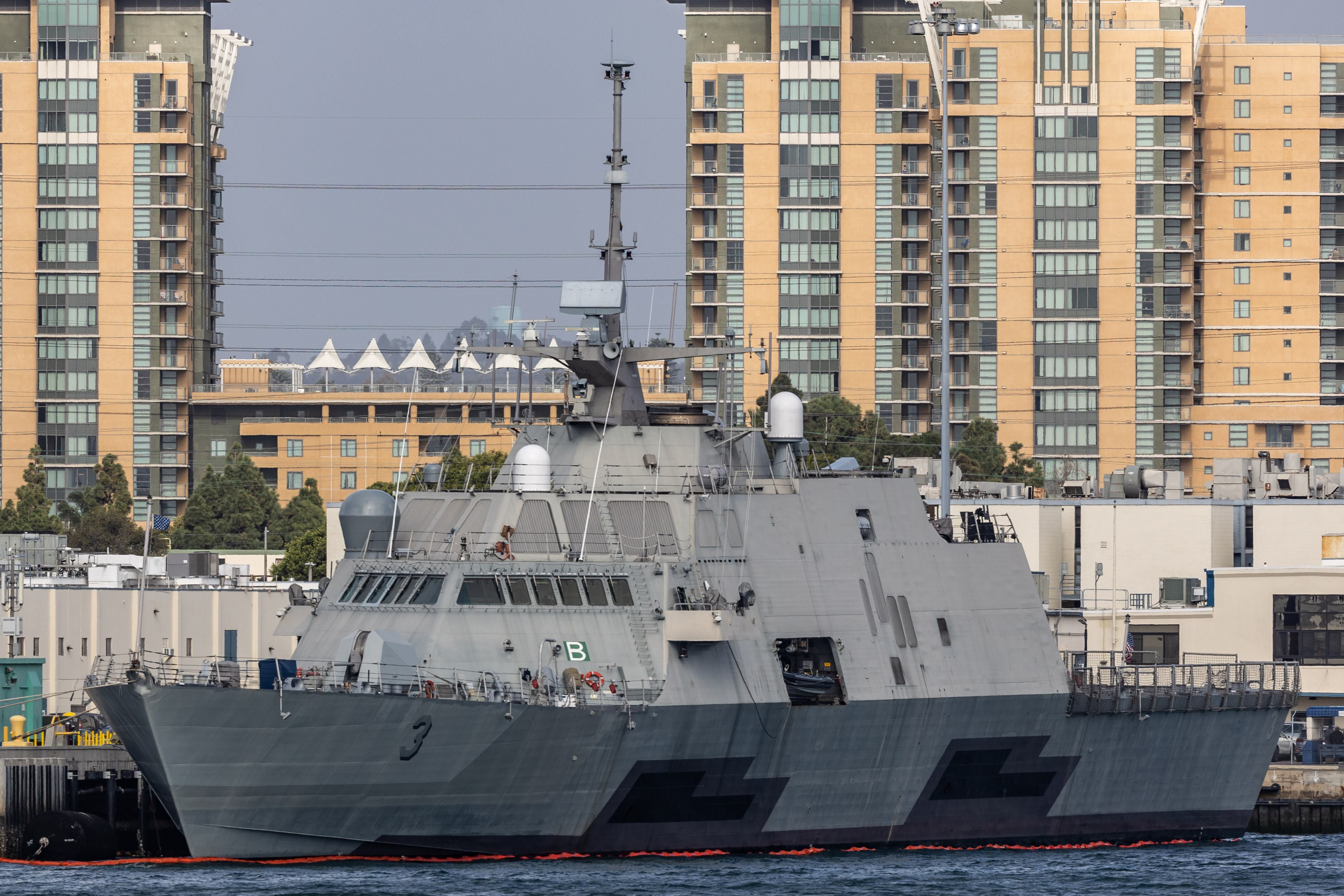
This post has been updated to correct the status of the latest Continuing Resolution proposal. The third CR for FY22 passed the House last week and is awaiting approval from the Senate.
SAN DIEGO, CALIF., – Congressional appropriators are closer to cementing a deal that would finalize the belated Fiscal Year 2022 defense budget, three legislative sources confirmed to USNI News on Wednesday.
The sources said the deal for the Department of Defense FY 2022 appropriations bill would be in line with the $768 billion FY 2022 authorization bill signed by President Joe Biden in late December. The FY 2022 spending bill would be about $25 to 30 billion more than the initial request for funds from the White House, the sources told USNI News.
Passage of the bill lingering in conference hinged on balancing a flat defense outlay with a marked increase in domestic spending. A small group of lawmakers had stalled negotiations over the DoD spending bill, prompting two patchwork continuing resolutions, according to legislative sources. The third FY22 CR proposal, passed last week by the House, extends federal government spending until March 11 and is awaiting approval from the Senate. The current CR expires on Friday.
The compromise comes as relations between Russia, China and the U.S. continue to deteriorate as a result of the build-up of Russian troops on the border of Ukraine and mounting Chinese air and naval operations in the Western Pacific in the last several weeks.
Service officials in recent weeks have voiced concern over the potential for a one-year continuing resolution, as lawmakers struggled to reach a spending deal.

“Budgets are on my mind everyday,” Chief of Naval Operations Mike Gilday told reporters on a Wednesday press call.
“I still believe we’re in a critical decade and the Navy is dependent upon stable and predictable funding, funding that supports the military strategy, and our Navy’s navigation plan.”
During a Wednesday panel at the WEST 2022 conference, budget officials for the sea services reiterated concerns over CRs and the effect the stop-gap bills have on readiness and the industrial base.
Rear Adm. John Gumbleton, the Navy’s deputy assistant secretary for budget, said it’s “tactically a very challenging time” right now for the service, as it answers questions for the Fiscal Year 2022 conference bills, while also trying to wrap up the FY 2023 budget submission.
“A year-long CR would be – catastrophic is not too strong a term to use. It truly would be. within our personnel accounts and – it would be a challenge to make payroll,” Gumbleton said.
“Here we are in month five, and so we’ve learned to be good at bad behavior, right. We have spent the last decade of deferring contracts to Q2, and now we’re actually – we are adjusting and evolving to say, ‘actually, let’s move these to Q3 now,’” he added.
Under the CR, Gumbleton said the service is currently trying to find dollars in its weapons procurement account to award one of several weapons contracts the Navy had planned for in the second quarter of FY 2022.
Asked if the potential for a conflict with China in the Indo-Pacific is helping them convince the Pentagon to change the balance of the budget – which is typically split evenly between the Army, Navy and Marine Corps – Gumbleton and his Marine Corps counterpart said the thinking is slowly changing.
“You know, if you can read a map and read a newspaper, the military decisions in a higher-end fight will be decided on, above and below the ocean, influenced heavily from the littorals. So, a 30-30-30-10 construct by tradition of budgeting simply doesn’t square with what I consider a military now,” said Marine Corps Lt. Gen. Christopher Mahoney, the deputy commandant for programs and resources. “Now is there a shift? I think there is, not only from across the river and an understanding that we want it to be an away game. We don’t want it to be a home game and that away game will be led by the naval force.”
Gumbleton described the shift as “moving glacially.”

“It’s inherently a political question both internal to the Pentagon and external to the Pentagon. So I think we’re starting to see slight movement, but measured in millions … not billions,” he said. “So I would say we’re moving glacially.”
Meanwhile, the Pentagon is crafting a last-minute budget proposal for FY 2023 that will top $770 billion – a significant leap from the Fiscal Year 2022, USNI News has learned.
A source familiar with the White House budget deliberations told USNI News that the total topline for the Department of Defense would be $773 billion. Reuters first reported the topline would go above $770 billion.
Pentagon spokesman Capt. Mike Kafka would not comment on preliminary budget work and referred USNI News to the Office of Management And Budget. OMB did not immediately respond to a request for comment.
For the Navy, the extra funds could affect proposals for the service to continue a campaign of retiring ships before the end of their expected service lives. The service shed the first two Littoral Combat Ships and proposed decommissioning a significant portion of its guided-missile cruiser fleet. Several defense officials have told USNI News that the Navy had considered shelving some, if not all, of the Freedom-class LCS and the oldest Arleigh Burke-class guided-missile destroyers to keep up readiness of the current fleet and invest in new capabilities like hypersonic weapons and unmanned systems. However, the increased topline for the Pentagon gives the Navy more resources to preserve force structure while still pursuing new capabilities.
“You have to be a realist with respect, with respect to budgets,” Gilday said.
“We’re in a foot race with China and we need to move fast, we need to build capacity fast, we need to build capability, mature capability fast.”





